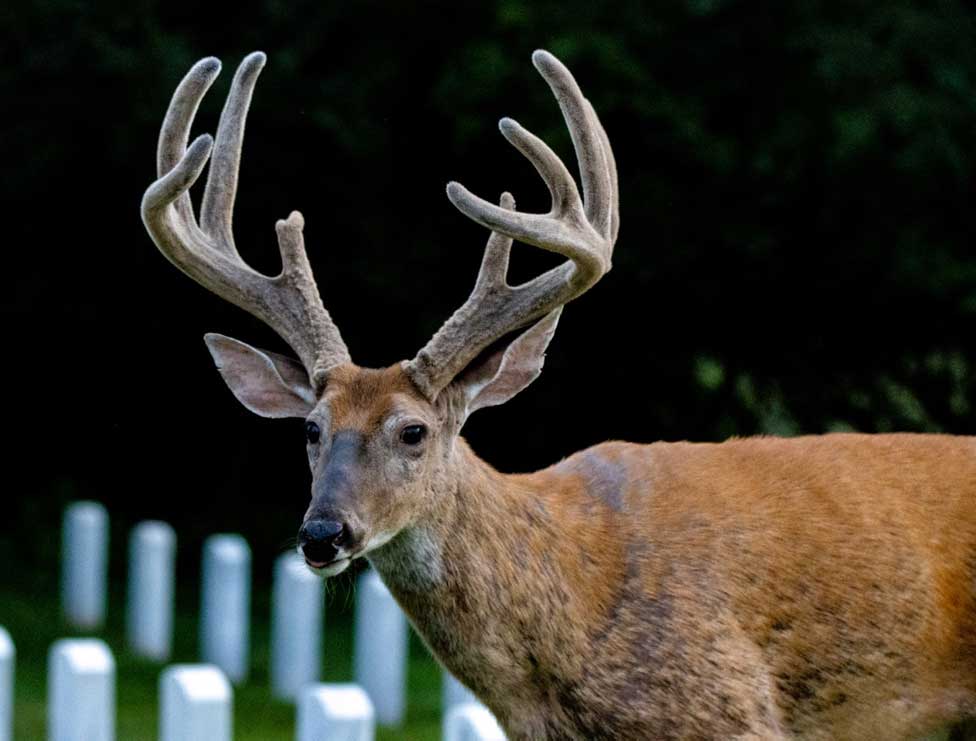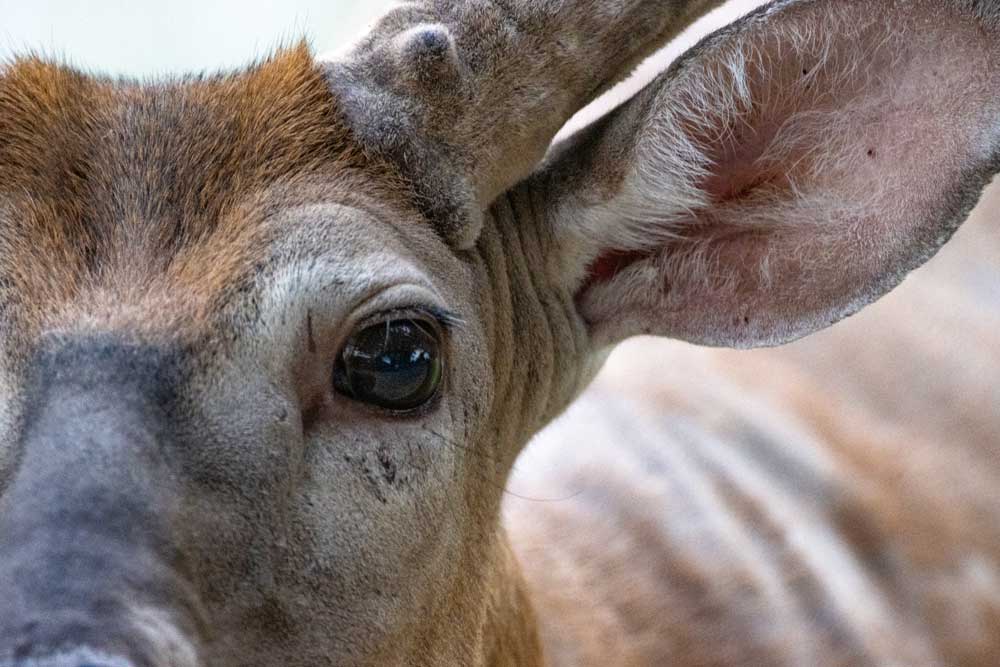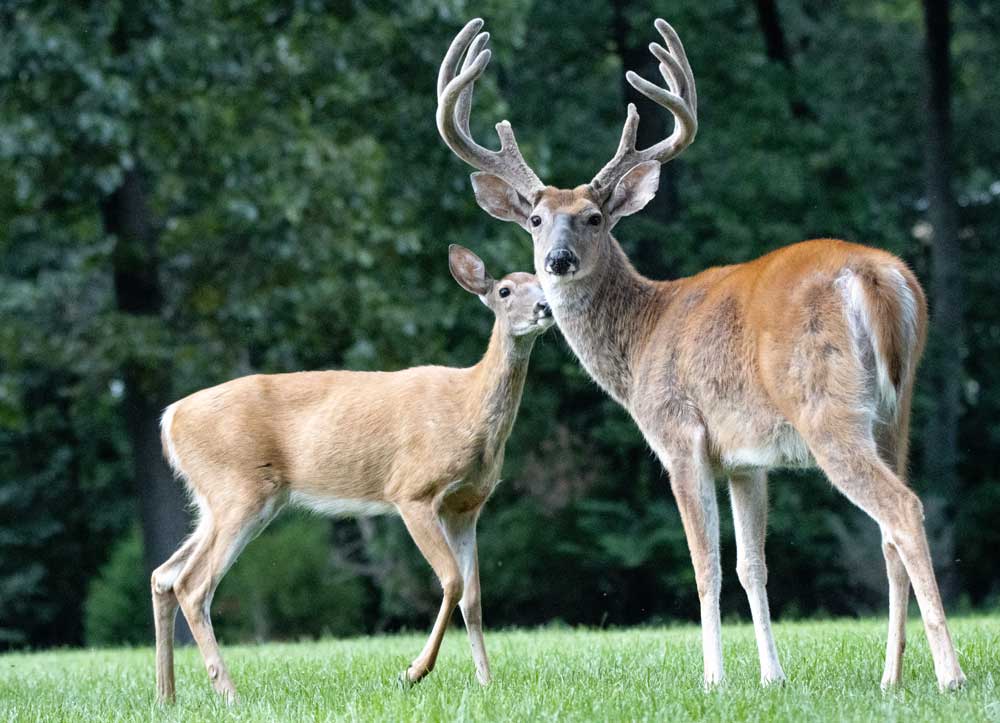For this year’s Memorial Day, we wanted to take a moment to recognize a place where giant bucks walk among the graves of honored veterans dating back to the Civil War.

Photos by Shannon Hill
The Jefferson Barracks National Cemetery, located on the banks of the Mississippi River in St. Louis, Missouri, is the final resting place to hundreds of thousands of veterans, the first of which were soldiers in the Civil War.
Jefferson Barracks, named for Thomas Jefferson, was the first permanent military installation west of the Mississippi, and it served as a training facility and medical center.
The cemetery was officially established in March of 1863 as a ten-acre burial ground, and in 1866, the Secretary of War designated the cemetery as a national cemetery. It included a small unofficial cemetery started a number of years earlier.
After the Civil War, the cemetery grew rapidly, as 10,000 Union soldiers were transferred to be buried in the grounds.
The cemetery now sprawls across over 300 acres along the banks of the Mississippi, and the surrounding park is full of local wildlife.

In fact, the park is home to a number of urban deer. They keep their distance from the cemetery during the day, for the most part, but at night and early in the mornings when no one is there, they come out to roam among the headstones and eat the landscaping, sometimes even the flowers left on graves.
And the deer are healthy. The bucks grow pretty large antlers—large enough to garner some interest from the hunting community. The parks and the cemetery are protected grounds, of course. But management needs to control the deer population before it overtakes the land and creates a problem for the cemetery and park.
So, as of 2020, Missouri began to offer a lottery tag draw for the opportunity to hunt in the surrounding park area. Hunters who draw tags will be allowed to archery hunt up to three deer, shooting down from a high angle in a tree at a maximum range of 30 yards.
“A healthy habitat is all about balance. You want everything at its normal level. And when one particular animal’s number gets too high, they can degrade the habitat and have negative impacts on other animals,” said Department of Conservation Metro Media Specialist Dan Zarlenga.

The lucky hunters will be allowed to harvest some of the deer that live on the grounds of Jefferson Barracks Park—the same deer who walk among the graves in the cemetery at night. It’s an honor to be able to hunt the deer not only for their large antlers, but also for their connection to the veterans, a number of whom undoubtedly hunted for wild game, as well.
Check with your Missouri friends to see if any have the opportunity to hunt Jefferson Barracks park this year—they’d be some lucky hunters.






























